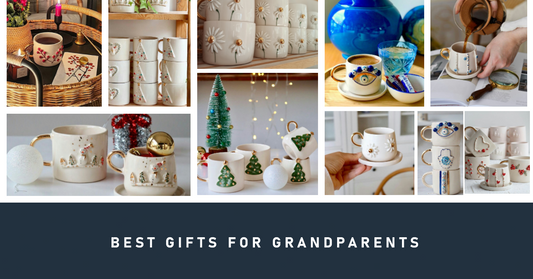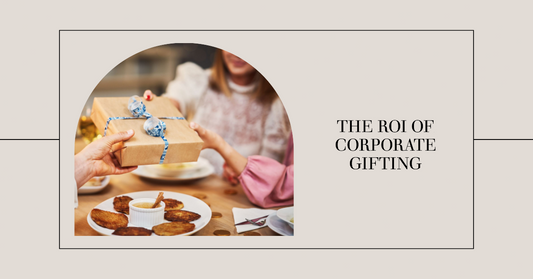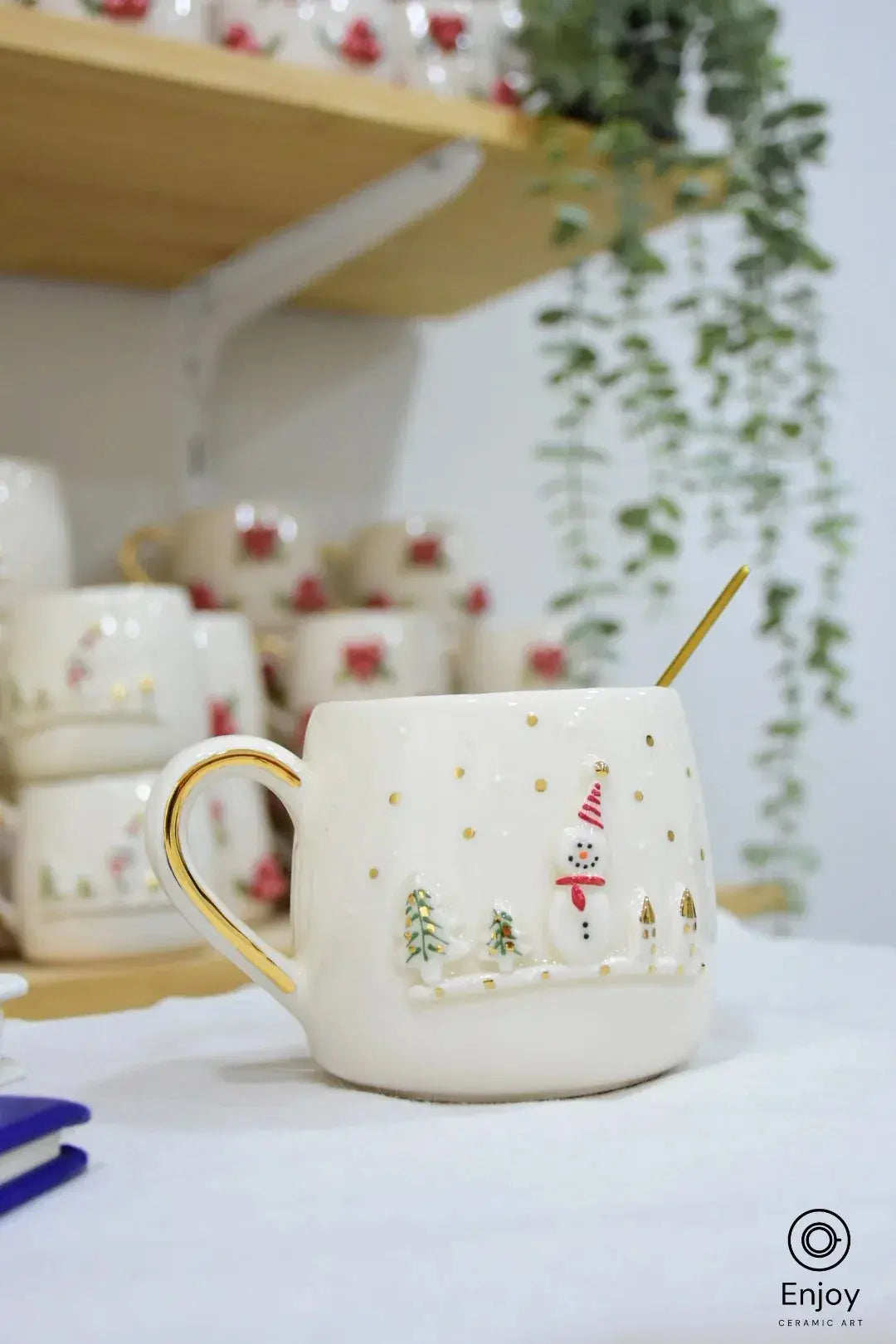Table of Contents
In today's world, sustainability has become a pressing concern for many people.
As we strive to make eco-friendly choices in our everyday lives, it's essential to extend this mindset to our gift-giving practices as well.
Choosing gifts that are both meaningful and sustainable can have a positive impact on the environment and promote a greener lifestyle.
When it comes to gifting, ceramic art is a versatile and eco-friendly choice that combines aesthetics with sustainability.
In this article, we will explore how to make eco-friendly choices when gifting ceramic art, with a special focus on Enjoy Ceramic Art, a ceramic studio that creates handmade coffee mugs and espresso cups.
How to Give an Eco-Friendly Gift

Giving an eco-friendly gift involves considering the environmental impact of the materials used, the production process, and the lifecycle of the product.
Here are some tips on how to give an eco-friendly gift:
- Choose sustainable materials: Look for gifts made from renewable, natural, or recycled materials. Ceramic art is a great option as it is made from clay, which is abundant and natural. Enjoy Ceramic Art uses high-quality clay sourced locally, reducing the carbon footprint associated with transportation.
- Avoid single-use items: Opt for gifts that are durable and reusable, rather than disposable or single-use items. Ceramic art, such as coffee mugs and espresso cups, can be used daily for years, reducing the need for disposable cups and promoting sustainability.
- Support local artisans: Choose gifts from local artisans or small businesses to support local economies and reduce the environmental impact of shipping. Enjoy Ceramic Art is a small ceramic studio that creates handmade mugs and cups, supporting local artisans and promoting sustainability.
- Consider the packaging: Pay attention to the packaging of the gift. Look for gifts that are packaged in eco-friendly materials, such as recycled paper or cardboard, and avoid excessive packaging. Enjoy Ceramic Art uses minimal and recyclable packaging for their products, reducing the environmental impact of packaging waste.
- Opt for functional and meaningful gifts: Choose gifts that are not only aesthetically pleasing but also functional and meaningful. Ceramic art, such as coffee mugs and espresso cups, are not only visually appealing but also practical and can be used on a daily basis, making them a thoughtful and eco-friendly gift choice.
How Eco-Friendly is Ceramic?

Ceramics is a sustainable and eco-friendly material that has been used for thousands of years.
Here are some reasons why ceramic is considered eco-friendly:
- Natural and renewable: Ceramics is made from raw materials, such as clay, which is abundant and renewable. Clay is a naturally occurring material that can be found in many parts of the world, making it a sustainable choice for ceramic art.
- Durable and long-lasting: Ceramic art, such as coffee mugs and espresso cups, is known for its durability and long lifespan. Unlike disposable or single-use items, ceramic art can be used for years, reducing the need for frequent replacements and minimizing waste.
- Recyclable: Ceramic is recyclable, which means that it can be broken down and used to create new ceramic products. This reduces the demand for raw materials and the environmental impact of extraction and production processes.
- Energy-efficient production: The production of ceramic art requires lower energy consumption than other materials, such as glass or metal. Ceramics are typically fired at high temperatures, which requires less energy compared to melting glass or metal.
- Chemical-free: Ceramic is made from natural materials and does not contain harmful chemicals or toxins. This makes it a safe and eco-friendly option for everyday use.
Enjoy Ceramic Art is committed to sustainability and eco-friendliness in their production process.
They use locally sourced clay and follow an environmentally responsible production.
How can I make my design eco-friendly?

To make your design eco-friendly, consider the following tips:
- Sustainable Materials: Choose materials that are eco-friendly and sustainable, such as recycled paper or cardboard, biodegradable or compostable materials, and FSC-certified (Forest Stewardship Council) paper or wood products. Avoid materials that are made from virgin or non-renewable resources, such as plastic or non-recycled paper.
- Minimalism: Keep your design simple and minimalist to reduce waste. Avoid excessive use of graphics, colors, and unnecessary elements that can contribute to environmental impact. Opt for a clean and minimal design that uses fewer resources and materials.
- Reduce Energy Consumption: Consider the energy consumption of your design process. Use energy-efficient equipment, such as computers and printers, and turn off unused devices to conserve energy. Choose digital methods, such as online sharing and digital distribution, over printed materials when possible to reduce paper waste.
- Use Eco-friendly Printing Techniques: If printing is necessary, choose eco-friendly printing techniques, such as water-based or vegetable-based inks, and avoid toxic or harmful chemicals in the printing process. Consider using digital or on-demand printing to reduce overproduction and minimize waste.
- Recyclable Design: Ensure that your design is recyclable or compostable after use. Avoid using materials that are difficult to recycle or have low recycling rates. Design with easy-to-separate components and avoid mixed materials that are challenging to recycle.
- Educate and Inspire: Include eco-friendly messaging or educational elements in your design to raise awareness about environmental issues and inspire others to adopt sustainable practices. Use your design as a platform to promote eco-friendly behaviors and encourage positive environmental change.
- Collaborate with Sustainable Partners: Collaborate with suppliers, printers, and other partners who share your values of sustainability. Choose partners who prioritize eco-friendly practices and use environmentally responsible materials and processes in their operations.
By incorporating these eco-friendly principles into your design process, you can create more sustainable designs that are mindful of the environment and contribute to a greener future.
What gift materials are environmentally friendly for packaging?

There are several environmentally friendly gift packaging materials that you can consider:
- Recycled Paper: Opt for gift boxes, wrapping paper, and other packaging materials made from recycled paper. Look for products that have a high percentage of post-consumer recycled content, which helps reduce the demand for virgin materials and minimizes waste.
- Biodegradable or Compostable Materials: Choose gift packaging materials that are biodegradable or compostable, such as biodegradable plastic, compostable paper or cardboard, and natural fibers like jute or cotton. These materials break down naturally in the environment without leaving harmful residues.
- FSC-Certified Paper or Wood: Look for gift packaging materials that are certified by the Forest Stewardship Council (FSC), which ensures that they are responsibly sourced from sustainably managed forests. FSC-certified paper or wood products are made using environmentally responsible practices, including protecting wildlife habitats and indigenous rights.
- Reusable Packaging: Consider using reusable gift packagings materials, such as fabric gift bags, cloth wraps, or decorative tins, that can be used multiple times before they need to be disposed of. Reusable packaging reduces waste and encourages sustainable gift-giving practices.
- Natural or Upcycled Materials: Explore gift packaging materials made from natural or upcycled materials, such as recycled kraft paper, recycled cotton, or upcycled fabric scraps. These materials often have a lower environmental impact compared to materials that require extensive processing or extraction of resources.
- Water-based or Vegetable-based Inks: If using printed packaging materials, choose inks that are water-based or vegetable-based instead of traditional solvent-based inks. Water-based or vegetable-based inks are generally more environmentally friendly as they have lower VOC emissions and are easier to recycle.
- Minimal Packaging: Consider using minimal packaging techniques that use the least amount of materials necessary to protect the gift. Avoid excessive use of plastic wraps, ribbons, or other non-essential packaging elements that can contribute to waste.
By choosing environmentally friendly gift packaging materials, you can reduce your ecological footprint and promote sustainable gift-giving practices.
Remember to also educate the gift recipients about the eco-friendly materials used and encourage them to recycle or reuse the packaging to further minimize environmental impact.







